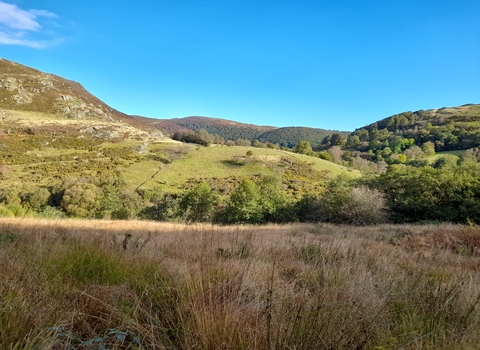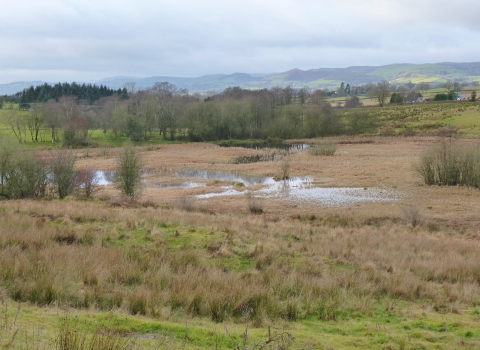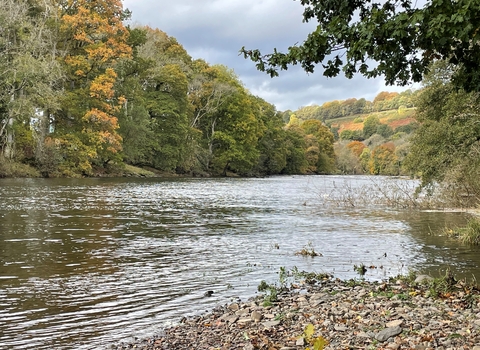Wetlands are incredibly important for people and wildlife. Wildlife-rich and sensitively managed wetlands can deliver significant benefits to society and are home to some of our most iconic species. Sadly, Radnorshire has lost large areas of wetland habitat due to drainage, over-abstraction of groundwater and physical modification of rivers and streams.
We are working with partners to protect what remains and create new areas for the future.
Why are wetlands important?
Wetlands capture rainwater and release it slowly. This allows groundwater systems to refill and stabilise water flows in rivers and streams, reducing both drought and flood risks. Plant matter steadily decays and accumulates in the waterlogged conditions of wetlands, meaning they are hugely important for holding carbon. However, the ability of a freshwater wetland habitat to capture carbon varies according to the condition of the wetland.
They can change rapidly, meaning the number and variety of species that inhabit them can also change quickly, making them exciting places to visit. They support a rich biodiversity including fish, damselflies, otters and birds. With the loss of wetland habitats has come dramatic reductions in the wildlife that relies on them, including snipe, curlew and lapwing that have seen significant decline.

Radnorshire Wildlife Trust has a long history of working to protect and enhance wetlands.
We manage our own wetland reserves, such as Burfa Bog, Abercamlo Bog and Pentrosfa Mire, making them safe havens for nature. The summer months sees dragonflies and damselflies dancing above the water and butterflies enjoying the flowering plants in the rich wetlands, while in the winter they provide important roost sites for overwintering birds. Plants decompose gradually in the waterlogged and acidic conditions, which stores the carbon absorbed from the atmosphere within the soil. This forms peat, a type of soil that consists of partially decomposed plant matter. Peat bogs, like Burfa Bog and Pentrosfa Mire, are carbon sinks, which are essential to help mitigate climate change by holding the carbon in the soil, providing a net-cooling effect.
We are currently engaged in the Wye Adapt to Climate Change? and Wilder Lugg programmes, both of which are delivering benefits for wetland wildlife on farmland by exploring nature-based solutions to reduce flooding. This includes the creation of dams, scrapes and pools to help the land hold water. Previous projects include Rhôs Pasture, which focused restoring and raising awareness about rhôs, a Welsh word meaning ‘moor’ or ‘moorland’ and describes wet marshy grassland. Widespread but declining in Wales, rhôs is identified in Section 7 of the Environment (Wales) Act 2016 as a priority grassland habitat that makes up 3% of grassland cover in Powys.


